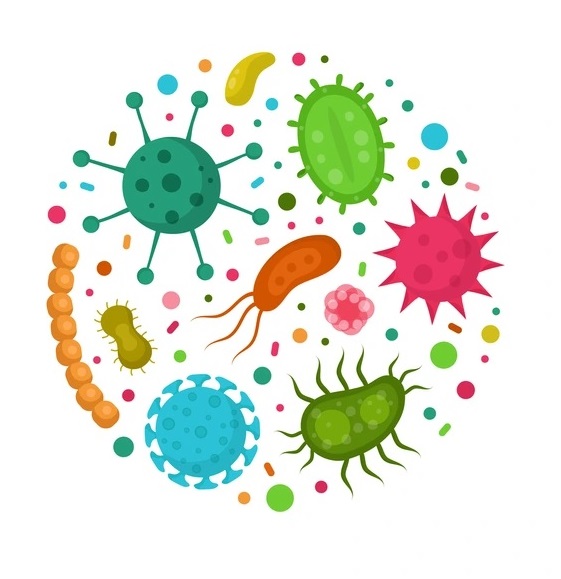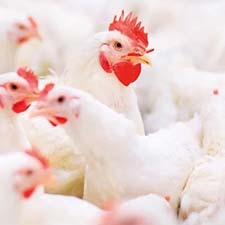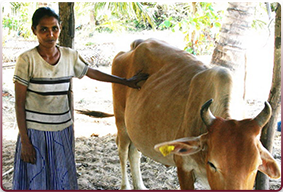
Mitigation of Disease Risks to Livestock and Human through targeted Wildlife Disease Surveillance.
Humans and Livestock share the same habitats with numerous species of wild animals in most parts of the world. This is true even in Sri Lanka where wildlife is not confined to the National Parks and nature reserves. Wildlife and livestock share same resources some parts of the country especially during dry seasons when the food and water is scarce.
Three fourths of all emerging infectious diseases of humans are zoonotic; most originate in wildlife, and their incidence since 1940 has increased. Wildlife can also serve as vectors for non-zoonotic diseases of livestock, potentially devastating to human populations not only economically but, in many regions, affecting food security due to loss of animal originated proteins.
Cost-effective prevention and control of these diseases require an interdisciplinary and holistic approach, and international cooperation. Surveillance, improvement of laboratory capacities, capacity building, research and communication are identified as the key elements of such control strategies.
This is an important preliminary steps in forging the collaborative agreements among relevant government departments and academia that will permit the evolution of a wildlife disease surveillance program, but it also urges Sri Lanka to implement an operational wildlife disease surveillance program and to use the results to inform good government of human and animal health throughout the country.
Initiation
Department of Animal Production and Health has responded to this national requirement and the international obligation by initiating the project “Mitigation of disease risks to livestock and humans through targeted wildlife disease surveillance” in 2018, with the collaboration of the Department of Wildlife Conservation, Faculty of Veterinary Medicine and Animal Science, University of Peradeniya and the Ministry of Health.
Objectives
The main objective is to minimize disease transmission from wildlife to humans (zoonotic diseases) and livestock (economically important diseases).
Wildlife disease surveillance that are integrated within national animal health surveillance infrastructures will have the capacity to respond promptly to the detection of unusual wildlife mortality/diseases and to investigate new and emerging wildlife diseases.
Early detection of wildlife diseases will have a high impact to reduce human health issues and develop livestock industry (e.g. international trade etc.).
Activities of the project
Establishment of Coordinating Unit and network among partner institutes in order to prompt communication of wild animal disease information to minimize disease risks to livestock.
Strengthening of laboratory capacities for diagnosis of wildlife diseases with zoonotic and/or economic importance, which facilitates the rapid disease diagnosis that helps to minimize disease risks to livestock.Two central laboratories at the Veterinary Research Institute (VRI) and 09 regional laboratories (Veterinary Investigation Centers) were identified to develop for wildlife disease surveillance and the selected laboratories are stated below.
VRI - Central Veterinary Investigation Center, Pathology laboratory
VICs -Ampara -Anuradhap -Dambulla -Hambanthota -Homagama -Maankulum -Pollonnaruwa -Ratnapura -Kundasale
Capacity Building for wildlife disease surveillance Following capacity building activities are usually conducted under this project for majority of the officers engaged in wildlife surveillance activities. Veterinary Surgeons, Veterinary Investigation Officers, Research Assistants and Livestock Development Officers of Department of Animal Production and Health, Veterinary Surgeons of Department of Wildlife Conservation and relevant staff of Faculty of Veterinary Medicine and Animal Science are subjected to these capacity building programs as they are the parties who involved in surveillance program.
Establishment of a National Database
Implementation of surveillance/research on wildlife diseases Priority diseases identified for the project were Rabies, TB, FMD, HS, Leptospirosis, HPAI, Newcastle Disease Laboratory investigations were carried out mainly by convenient samples.
2024-01-26
13:30
Livestock Breeding Project (LBP)
2024-05-30
10:30
Control of Contagious Diseases
2024-01-26
12:55
Export Facilitation of Chicken Meat and Eggs though Poultry Health Management
2024-01-26
01:15
Upgrading poultry & fish disease diagnostic facilities at regional (District) Veterinary Investigation Centers -
2024-01-26
13:15
Mitigation of Disease Risks to Livestock and Human through targeted Wildlife Disease Surveillance.
2024-01-26
13:30
Mitigation of Disease Risks to Livestock and Human through targeted Wildlife Disease Surveillance.
Humans and Livestock share the same habitats with numerous species of wild animals in most parts of the world. This is true even in Sri Lanka where wildlife is not confined to the National Parks and nature reserves. Wildlife and livestock share same resources some parts of the country especially during dry seasons when the food and water is scarce.
Three fourths of all emerging infectious diseases of humans are zoonotic; most originate in wildlife, and their incidence since 1940 has increased. Wildlife can also serve as vectors for non-zoonotic diseases of livestock, potentially devastating to human populations not only economically but, in many regions, affecting food security due to loss of animal originated proteins.
Cost-effective prevention and control of these diseases require an interdisciplinary and holistic approach, and international cooperation. Surveillance, improvement of laboratory capacities, capacity building, research and communication are identified as the key elements of such control strategies.
This is an important preliminary steps in forging the collaborative agreements among relevant government departments and academia that will permit the evolution of a wildlife disease surveillance program, but it also urges Sri Lanka to implement an operational wildlife disease surveillance program and to use the results to inform good government of human and animal health throughout the country.
Initiation
Department of Animal Production and Health has responded to this national requirement and the international obligation by initiating the project “Mitigation of disease risks to livestock and humans through targeted wildlife disease surveillance” in 2018, with the collaboration of the Department of Wildlife Conservation, Faculty of Veterinary Medicine and Animal Science, University of Peradeniya and the Ministry of Health.
Objectives
The main objective is to minimize disease transmission from wildlife to humans (zoonotic diseases) and livestock (economically important diseases).
Wildlife disease surveillance that are integrated within national animal health surveillance infrastructures will have the capacity to respond promptly to the detection of unusual wildlife mortality/diseases and to investigate new and emerging wildlife diseases.
Early detection of wildlife diseases will have a high impact to reduce human health issues and develop livestock industry (e.g. international trade etc.).
Activities of the project
Establishment of Coordinating Unit and network among partner institutes in order to prompt communication of wild animal disease information to minimize disease risks to livestock.
Strengthening of laboratory capacities for diagnosis of wildlife diseases with zoonotic and/or economic importance, which facilitates the rapid disease diagnosis that helps to minimize disease risks to livestock.Two central laboratories at the Veterinary Research Institute (VRI) and 09 regional laboratories (Veterinary Investigation Centers) were identified to develop for wildlife disease surveillance and the selected laboratories are stated below.
VRI - Central Veterinary Investigation Center, Pathology laboratory
VICs -Ampara -Anuradhap -Dambulla -Hambanthota -Homagama -Maankulum -Pollonnaruwa -Ratnapura -Kundasale
Capacity Building for wildlife disease surveillance Following capacity building activities are usually conducted under this project for majority of the officers engaged in wildlife surveillance activities. Veterinary Surgeons, Veterinary Investigation Officers, Research Assistants and Livestock Development Officers of Department of Animal Production and Health, Veterinary Surgeons of Department of Wildlife Conservation and relevant staff of Faculty of Veterinary Medicine and Animal Science are subjected to these capacity building programs as they are the parties who involved in surveillance program.
Establishment of a National Database
Implementation of surveillance/research on wildlife diseases Priority diseases identified for the project were Rabies, TB, FMD, HS, Leptospirosis, HPAI, Newcastle Disease Laboratory investigations were carried out mainly by convenient samples.
2024-01-26
















